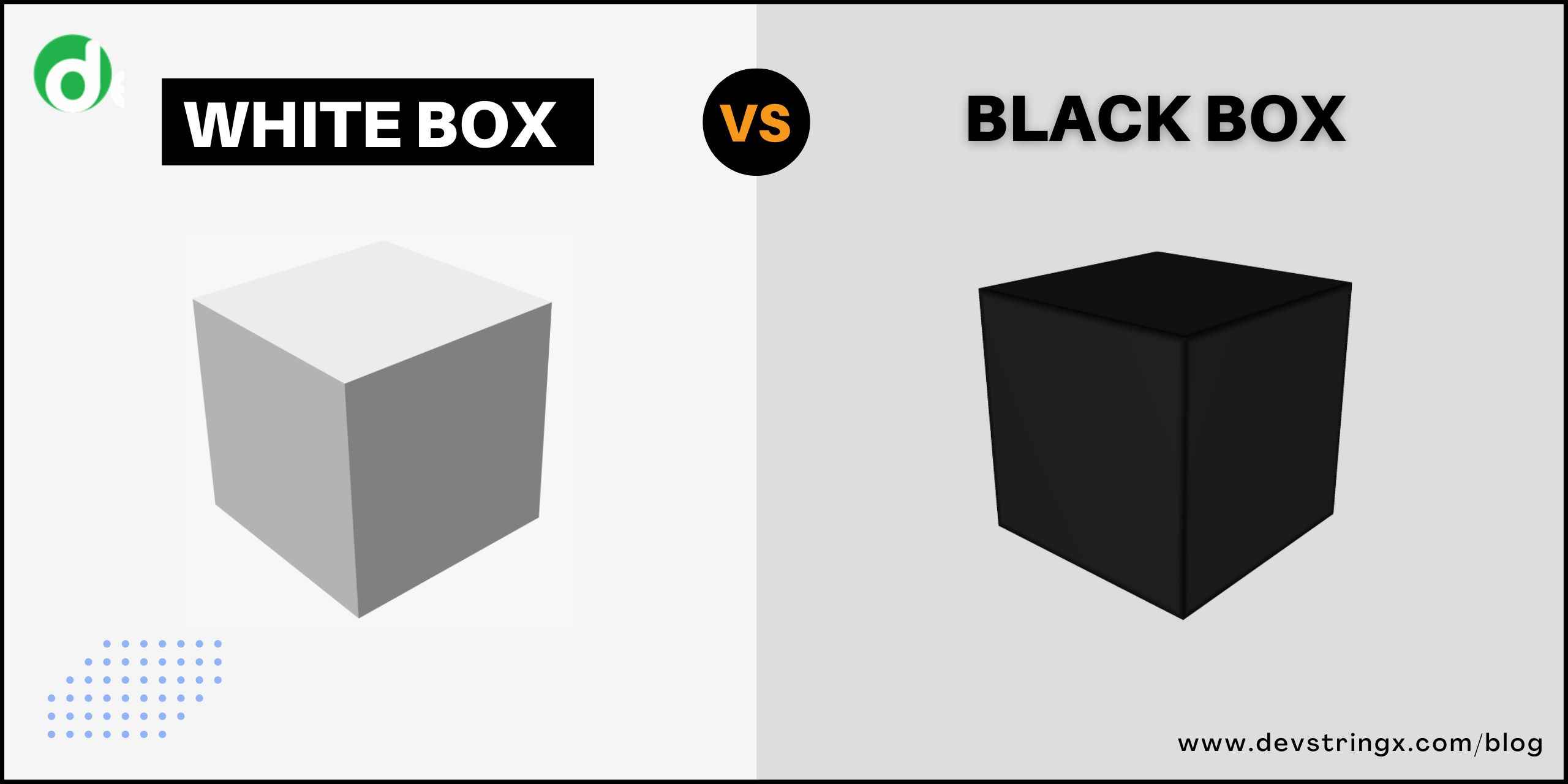The Difference Between Black Box Testing and White Box Testing – Devstringx
White box and black box testing are two of the most commonly used software testing methodologies today, but what exactly do they mean? While the terms may sound like the beginning of a silly riddle, these types of testing actually play an important role in helping teams identify and reduce bugs during the development process. In this guide, we’ll cover everything you need to know about white box and black box testing, including how these approaches differ, who uses them and when to apply them during your test plan.
Black Box Testing (AKA Functional/Behavioural Testing)
Black box testing involves an examination of a program’s behavior without any knowledge of its structure or design. This type of testing is also known as functional testing, validation, verification, and acceptance testing. A functional test specifies how a user would interact with an application by detailing how data is accepted, processed, displayed, and stored. Functional tests are typically written from a user’s point of view, so they may refer to as user-based tests. Functional tests tend to focus on what users can do in an application rather than how it works internally.
Recommended to Read- What Is Black Box Testing?
White Box Testing (AKA Structural/Syntax Testing)
This type of testing is best suited for testers who want to test every line of code in a web app, as opposed to black box testing. With white box testing, you can make sure that each function does what it’s supposed to do (or look for any bugs). This usually involves creating different scenarios or paths within an application. While some testers may start with black box testing (below), others may jump right into white box testing.
The benefit of using white box testing first is that it allows you to get familiar with how an application works before moving on to other types of tests. The downside? It takes longer than black box testing, so you might not be able to complete all your tests if time is limited. If there are certain areas of your website/application that you know will need special attention (for example security issues), consider doing more extensive white box testing in those areas first.
Recommended to Read- What Is White Box Testing?
Bug Detection Methods
There are two main types of software testing—black box testing, which tests a program without regard to how it works, and white box testing, which tests code based on its internal mechanisms. This type of analysis is also known as structural testing. The differences between these two approaches come down to the assumptions each method makes.
When you’re doing black box testing, you assume nothing about what’s happening under the hood. When you do white box testing, however, you take into account what’s happening under the hood when evaluating your results. In other words, black box testing assumes that everything works as intended; white box testing assumes that everything doesn’t work as intended.
Ultimately, both black-box and white-box testing can use to identify bugs. The difference is that black box testing finds those bugs based on surface-level interactions with a program, while white box testing finds them by using those interactions as an entry point into understanding how a program works at its core.
Use Cases for Each Type of Testing
Suppose you want to test your calculator app. One way to do that is by putting it through its paces. You could use it to add up a bunch of numbers, subtract some numbers, multiply others, divide a few more, and so on. But there’s a problem with that approach: you’re not testing your app in any sort of structured way; you’re just using it normally. What if you want to see how well it works when inputting negative numbers? Or what if you want to make sure that it handled large values correctly? If you don’t have some sort of plan for what inputs and situations to test, then your testing won’t be very useful. That’s where black box (or functional) testing comes in. With black box testing, you create a list of all possible inputs (or test cases) for an app or website.
How to Learn More
If you’re interested in learning more about software testing, there are plenty of online resources to guide you. Both Wikipedia and Suite 101 offer excellent introductory lessons on software testing, while youtube and many other platforms offer a more technical examination of black-box software testing. No matter which approach you take with your software testing education, it’s important to understand that test design is an art form; there are no right answers when it comes to designing effective tests. In fact, much of what makes for good software testing is an experience—the longer you work as a tester, the better your instincts will be at predicting where bugs might be hiding. There’s no shortcut around experience; if you want to be a great tester, then you need to spend time working as one!














